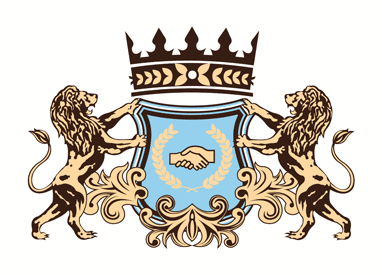Neurocrine Biosciences Presents Data on Improvements in Physiologic Glucocorticoid Dosing and Select Reproductive Hormones in Patients with Classic Congenital Adrenal Hyperplasia Taking CRENESSITY™ (crinecerfont)
Neurocrine Biosciences Presents Data on Improvements in Physiologic Glucocorticoid Dosing and Select Reproductive Hormones in Patients with Classic Congenital Adrenal Hyperplasia Taking CRENESSITY™ (crinecerfont) |
| [15-May-2025] |
SAN DIEGO, May 15, 2025 /PRNewswire/ -- Neurocrine Biosciences, Inc. (Nasdaq: NBIX) today announced new data from the Phase 3 CAHtalyst™ Adult and Pediatric studies of CRENESSITY™ (crinecerfont). The data showed that a substantial proportion of pediatric patients with classic congenital adrenal hyperplasia achieved physiologic-range glucocorticoid doses and normal androstenedione levels. Additionally, adult male patients with classic congenital adrenal hyperplasia observed improvements in select reproductive hormone levels. Both adult and pediatric patients achieved substantial reductions in glucocorticoid doses. These results were presented at the 2025 American Association of Clinical Endocrinology Annual Meeting in Orlando. Congenital adrenal hyperplasia (CAH) is characterized by imbalances in hormone production, including cortisol, aldosterone and androgens, which cause a wide range of symptoms and can lead to long-term health problems. "Historically, CAH has been treated with high-dose glucocorticoids alone. However, this approach can lead to serious and significant complications due to high-dose steroid use," said Eiry W. Roberts, M.D., Chief Medical Officer, Neurocrine Biosciences. "CRENESSITY, a novel oral corticotropin-releasing factor type 1 receptor antagonist, has demonstrated the potential to achieve two key therapeutic goals: reducing the effects of excess androgens and enabling reduction in glucocorticoid doses. This dual action may help reduce the adverse effects associated with chronic exposure to supraphysiologic doses of glucocorticoids." More physiologic glucocorticoid (GC) treatment with greater reductions of androstenedione (A4) in pediatric patients (featured oral presentation): In the CAHtalyst Pediatric study, children and adolescents with classic CAH (four to 17 years), including both salt-wasting and simple virilizing forms, were randomized to 28 weeks of double-blind treatment with placebo or CRENESSITY. Changes in GC doses and A4 levels (measured before the morning GC dose) were analyzed using waterfall charts based on individual patient data at baseline and Week 28, along with an analysis that evaluated categorical shifts from baseline to Week 28. Data showed:
In the pediatric study, CRENESSITY was generally well tolerated, with no adrenal crises reported in the double-blind treatment period. The most common adverse reactions with CRENESSITY were headache (25% versus 6% for placebo), abdominal pain (13% versus 0%), fatigue (7% versus 0%), nasal congestion (7% versus 3%) and epistaxis (4% versus 0%). Improvement of select reproductive hormones in adult males (featured oral presentation): Select reproductive hormone changes in adult males with classic CAH who received up to one year of CRENESSITY were evaluated from the CAHtalyst Adult study. At Week 24 (end of double-blind, placebo-controlled period) and Month 12 (end of open-label period), analyses were conducted on luteinizing hormone (LH) and A4-to-testosterone ratio (A4/T; a ratio of >0.5 is indicative of excessive adrenal androgen production) in male patients (during the open-label period from Week 24 to Month 12, all patients received CRENESSITY). Results were presented as percentages of patients with observed rates of normalization (n) out of those who had abnormal values at baseline (N). Data showed:
In the adult study, two patients (1.6%) taking CRENESSITY experienced adrenal crisis. No patients on placebo experienced adrenal crisis. However, one patient (1.7%) on placebo experienced adrenal insufficiency. The most common adverse reactions with CRENESSITY were fatigue (25% versus 15% for placebo), headache (16% versus 15%), dizziness (8% versus 3%), arthralgia (7% versus 0%), back pain (6% versus 3%), decreased appetite (4% versus 2%) and myalgia (4% versus 3%). About Congenital Adrenal Hyperplasia Historically, exogenous glucocorticoids (GCs) have been used to correct the endogenous cortisol deficiency, but doses higher than those for cortisol replacement (supraphysiologic) are needed to lower the elevated levels of adrenocorticotropic hormone (ACTH) and adrenal androgens. However, GC treatment at high doses has been associated with serious and significant complications of steroid excess, including metabolic issues such as weight gain and diabetes, cardiovascular disease and osteoporosis. Additionally, long-term treatment with high-dose GCs may have psychological and cognitive impacts, such as changes in mood and memory. Adrenal androgen excess has been associated with abnormal bone growth and development in pediatric patients, female health problems such as excess facial hair growth and menstrual irregularities, in addition to fertility issues in both sexes. The symptoms of high ACTH may include testicular adrenal rest tumors (TARTs) or ovarian adrenal rest tumors (OARTs). About The CAHtalyst™ Studies The CAHtalyst Pediatric study included 103 pediatric patients four to 17 years of age. The study tested two questions. The first question evaluated whether four weeks of CRENESSITY treatment could improve androgen control. The second question evaluated whether an additional 24 weeks of CRENESSITY treatment enabled customized glucocorticoid (GC) down-titration while androstenedione levels were maintained or improved. The CAHtalyst Adult study included 182 adult patients 18 to 58 years of age. Similarly, the first question of the study evaluated whether four weeks of CRENESSITY treatment could improve androgen control, and the second question evaluated whether an additional 20 weeks of CRENESSITY treatment enabled GC reduction to physiologic range while androstenedione levels were maintained or improved. Data from the CAHtalyst Phase 3 studies supported approval of CRENESSITY by the U.S. Food and Drug Administration in December 2024. The open-label extension treatment portions of both studies are ongoing. About CRENESSITY™ (crinecerfont) CRENESSITY comes in capsules and an oral solution. The capsule formulation is available in 50 mg and 100 mg doses. The oral solution is available as a 50 mg/mL strength formulation. For adults 18 years of age and older, the recommended dosage is 100 mg twice daily taken orally with a meal. For pediatric patients four to 17 years of age weighing less than 55 kg (121 lbs), the recommended dosage is based on body weight and is administered twice daily, taken orally with a meal. For pediatric patients weighing more than 55 kg (121 lbs), the recommended dosage is 100 mg twice daily taken orally with a meal. Healthcare providers can work with patients to determine the appropriate formulation for use depending on patient needs. Patients receiving CRENESSITY should continue GC therapy for cortisol replacement. Important Information Approved Uses IMPORTANT SAFETY INFORMATION Do not take CRENESSITY if you: CRENESSITY may cause serious side effects, including: Allergic Reactions. Symptoms of an allergic reaction include tightness of the throat, trouble breathing or swallowing, swelling of the lips, tongue, or face, and rash. If you have an allergic reaction to CRENESSITY, get emergency medical help right away and stop taking CRENESSITY. Risk of Sudden Adrenal Insufficiency or Adrenal Crisis With Too Little Glucocorticoid (Steroid) Medicine. Sudden adrenal insufficiency or adrenal crisis can happen in people with congenital adrenal hyperplasia who are not taking enough glucocorticoid (steroid) medicine. You should continue taking your glucocorticoid (steroid) medicine during treatment with CRENESSITY. Certain conditions such as infection, severe injury, or shock may increase your risk for sudden adrenal insufficiency or adrenal crisis. Tell your healthcare provider if you get a severe injury, infection, illness, or have planned surgery during treatment. Your healthcare provider may need to change your dose of glucocorticoid (steroid) medicine. Before taking CRENESSITY, tell your healthcare provider about all of your medical conditions, including if you are pregnant or plan to become pregnant, or are breastfeeding or plan to breastfeed. Tell your healthcare provider about all the medicines you take, including prescription and over-the-counter medicines, vitamins, and herbal supplements. The most common side effects of CRENESSITY in adults include tiredness, headache, dizziness, joint pain, back pain, decreased appetite, and muscle pain. The most common side effects of CRENESSITY in children include headache, stomach pain, tiredness, nasal congestion, and nosebleeds. These are not all the possible side effects of CRENESSITY. Call your healthcare provider for medical advice about side effects. You are encouraged to report negative side effects of prescription drugs to the FDA. Visit MedWatch at www.fda.gov/medwatch or call 1-800-FDA-1088. Dosage Forms and Strengths: CRENESSITY is available in 50 mg and 100 mg capsules, and as an oral solution of 50 mg/mL. Please see full Prescribing Information. About Neurocrine Biosciences, Inc. The NEUROCRINE BIOSCIENCES Logo, NEUROCRINE and YOU DESERVE BRAVE SCIENCE are registered trademarks of Neurocrine Biosciences, Inc. CRENESSITY and CAHtalyst are trademarks of Neurocrine Biosciences, Inc. Forward-Looking Statements © 2025 Neurocrine Biosciences, Inc. All Rights Reserved. CAP-CFT-US-0025 05/2025
SOURCE Neurocrine Biosciences, Inc. | |||||||||||||||||||||||||||
Company Codes: NASDAQ-NMS:NBIX | |||||||||||||||||||||||||||




















